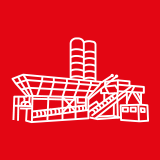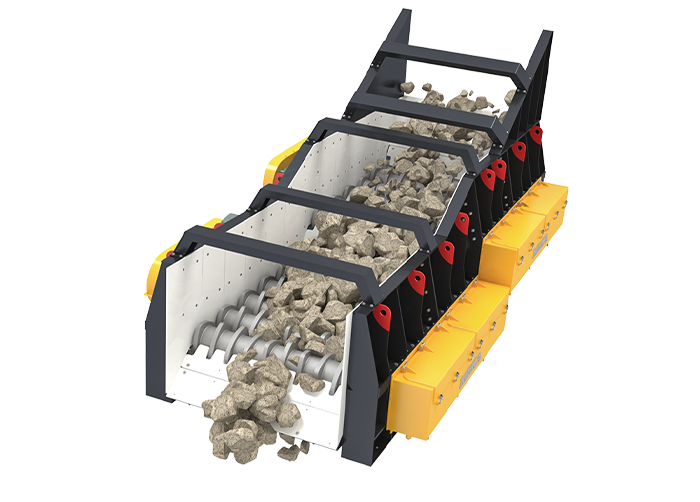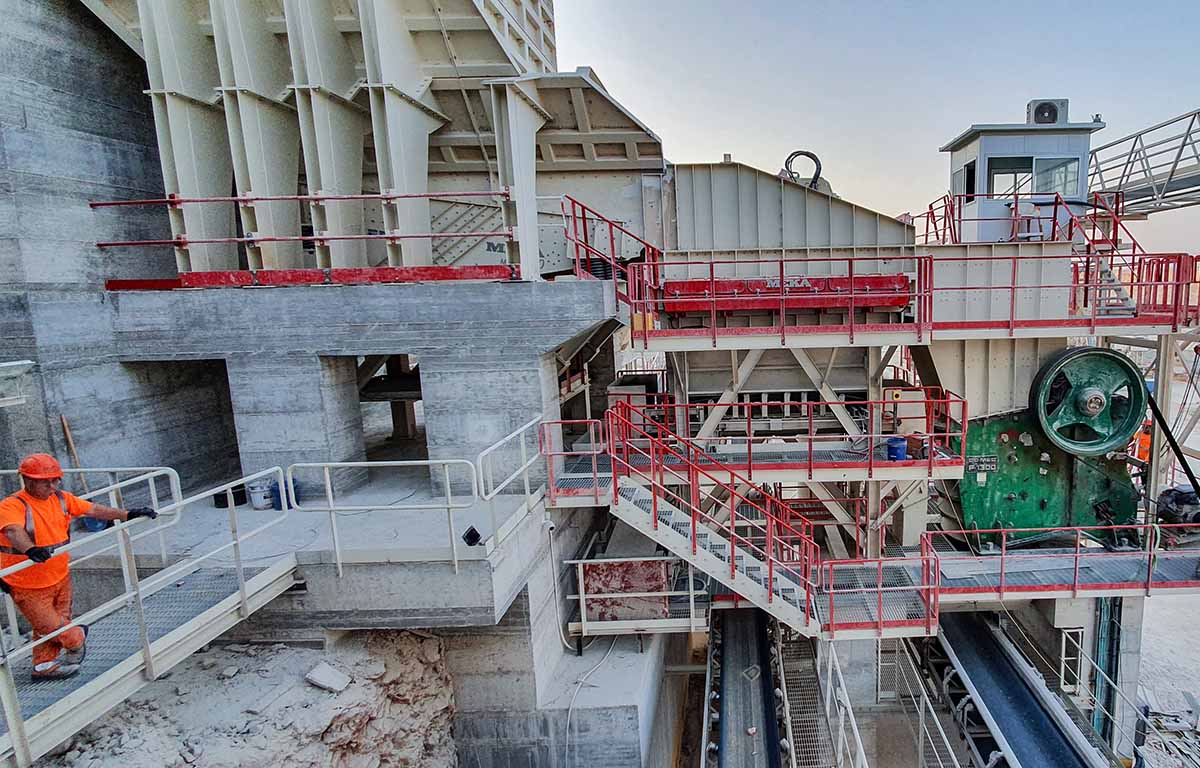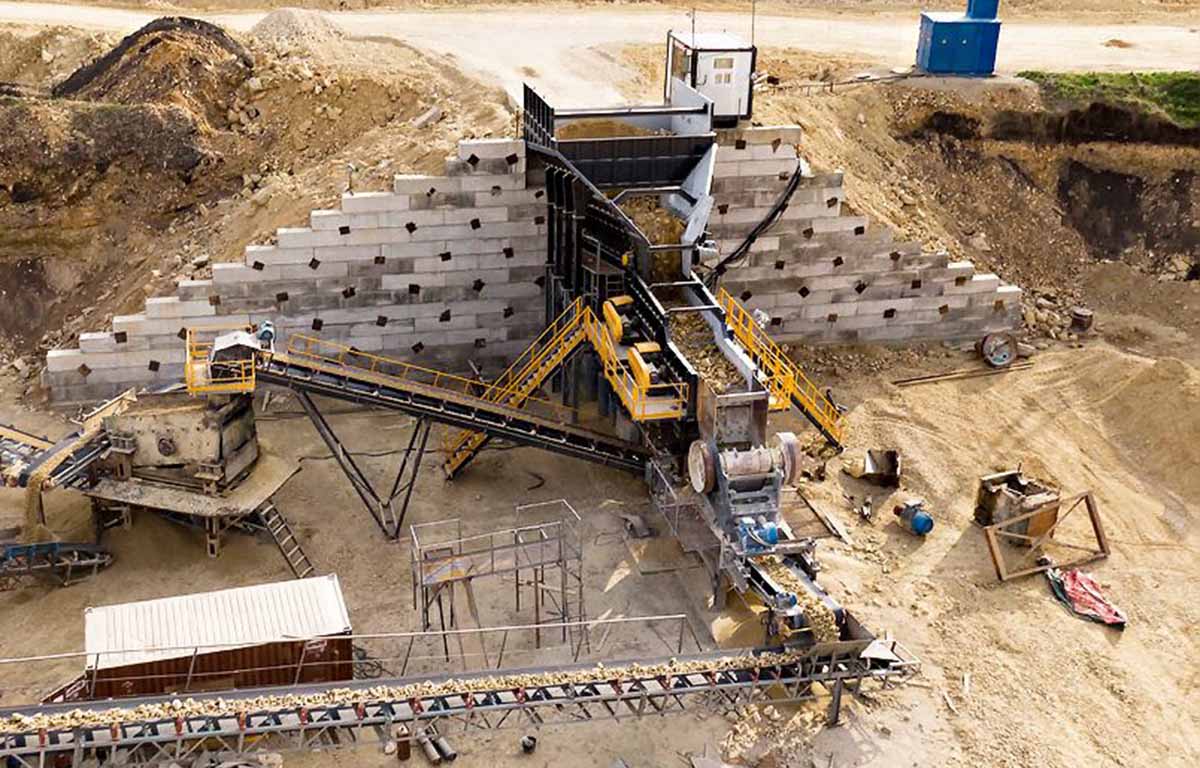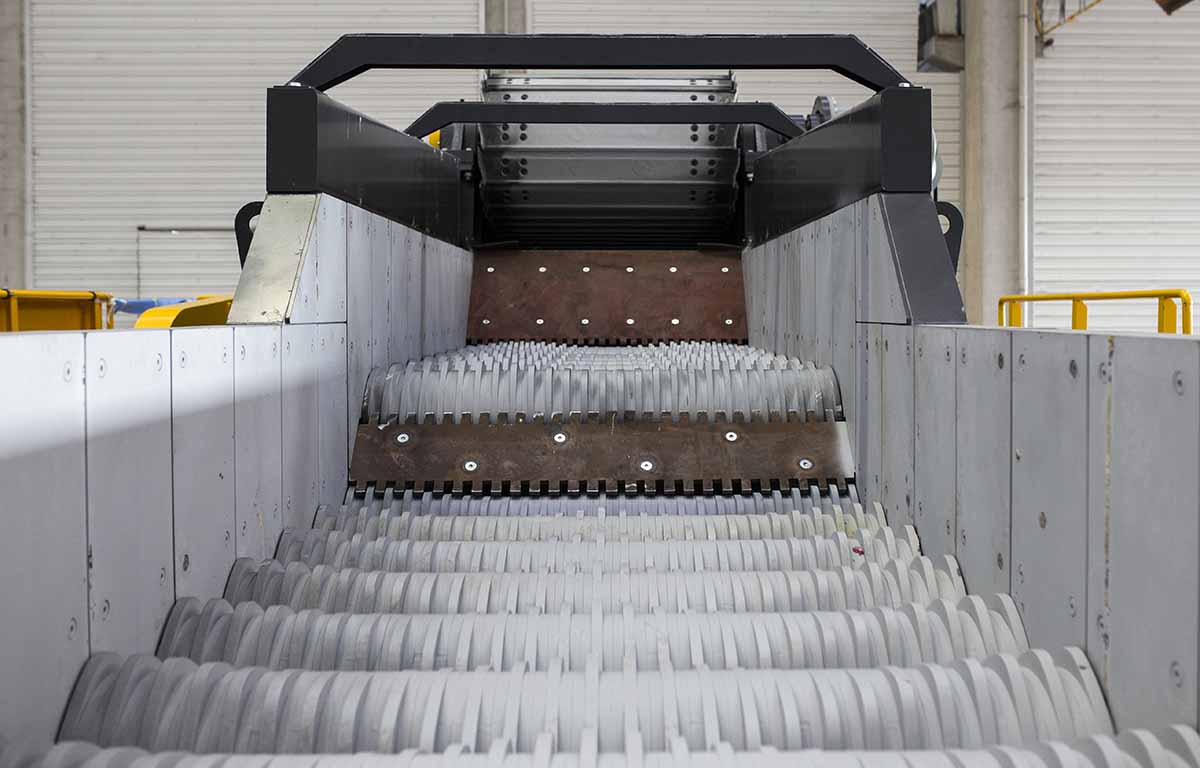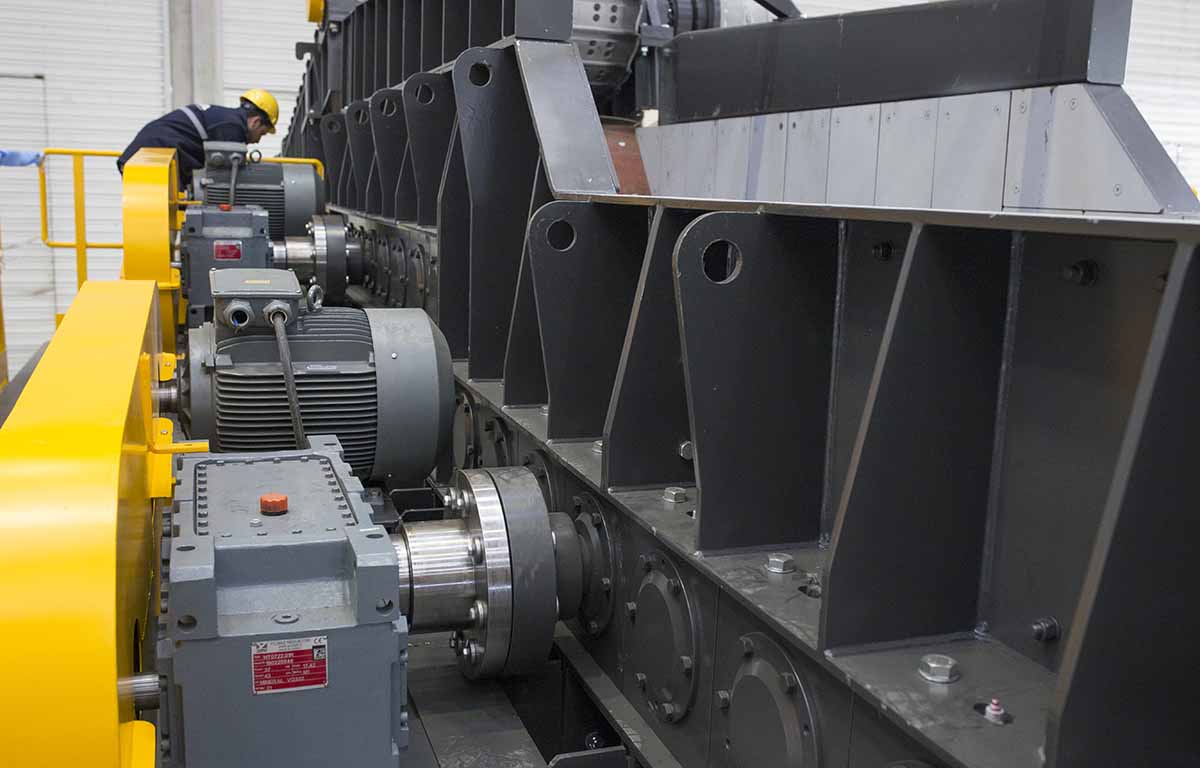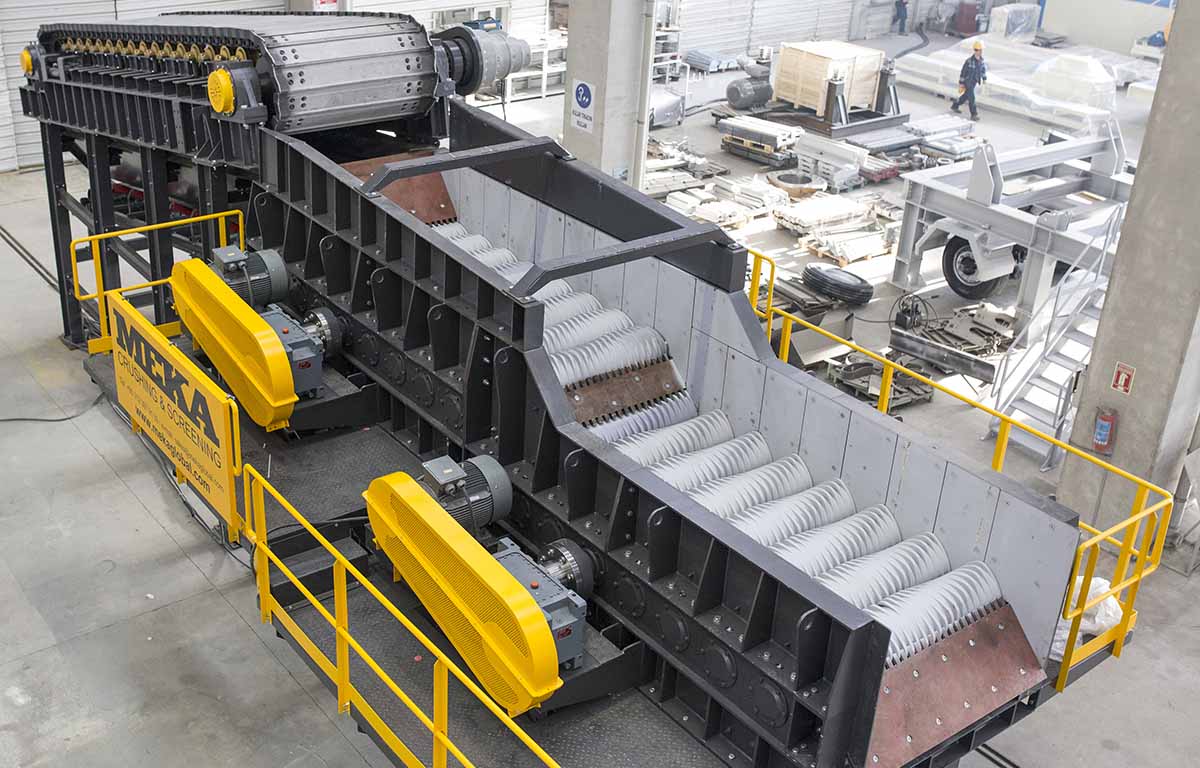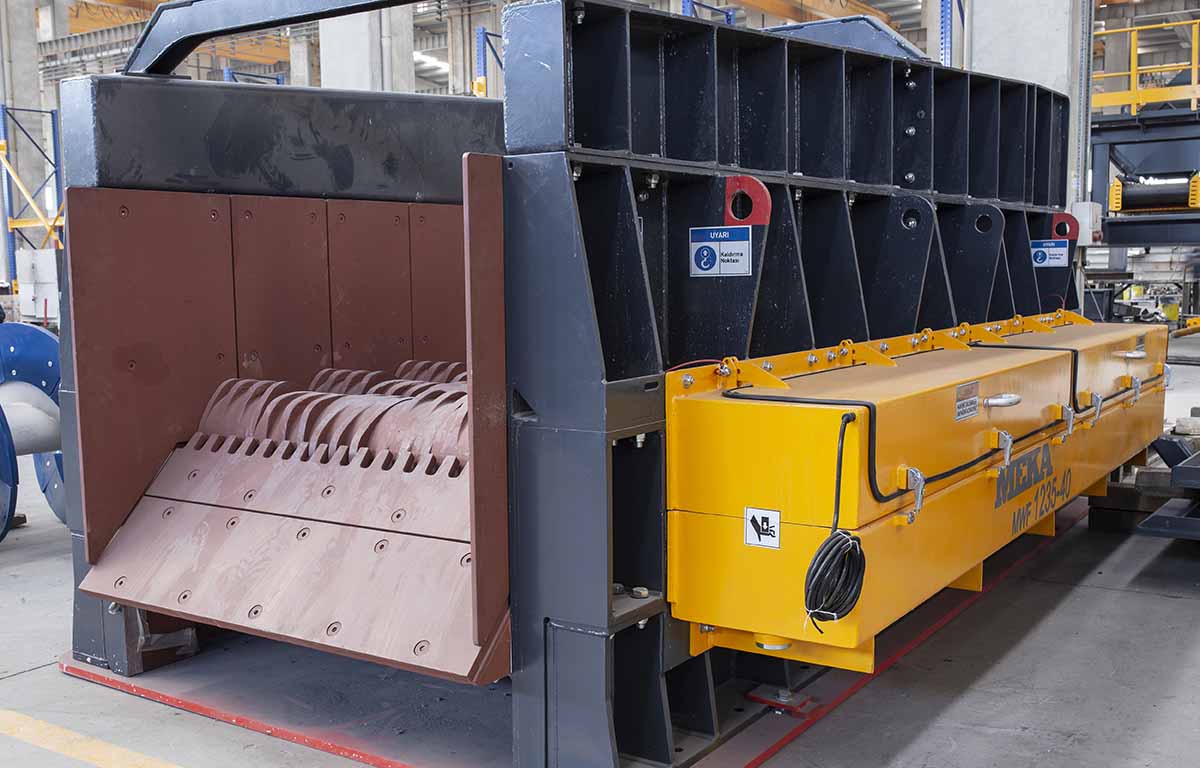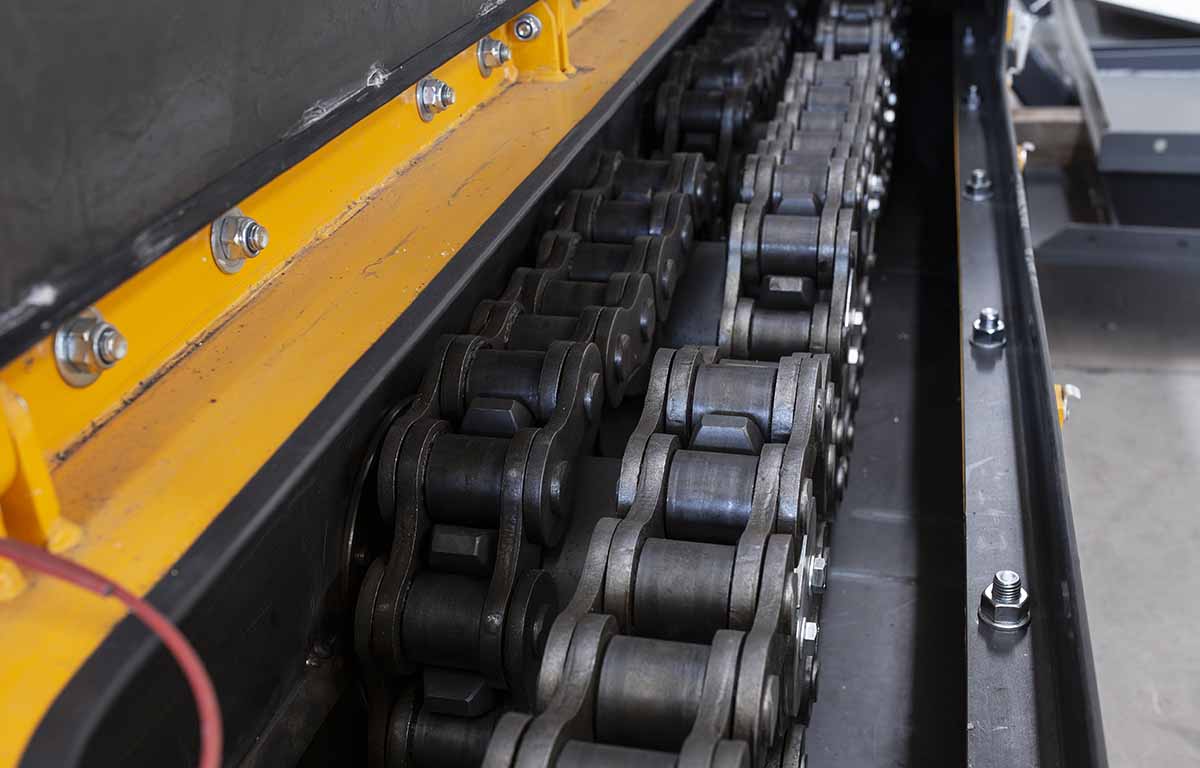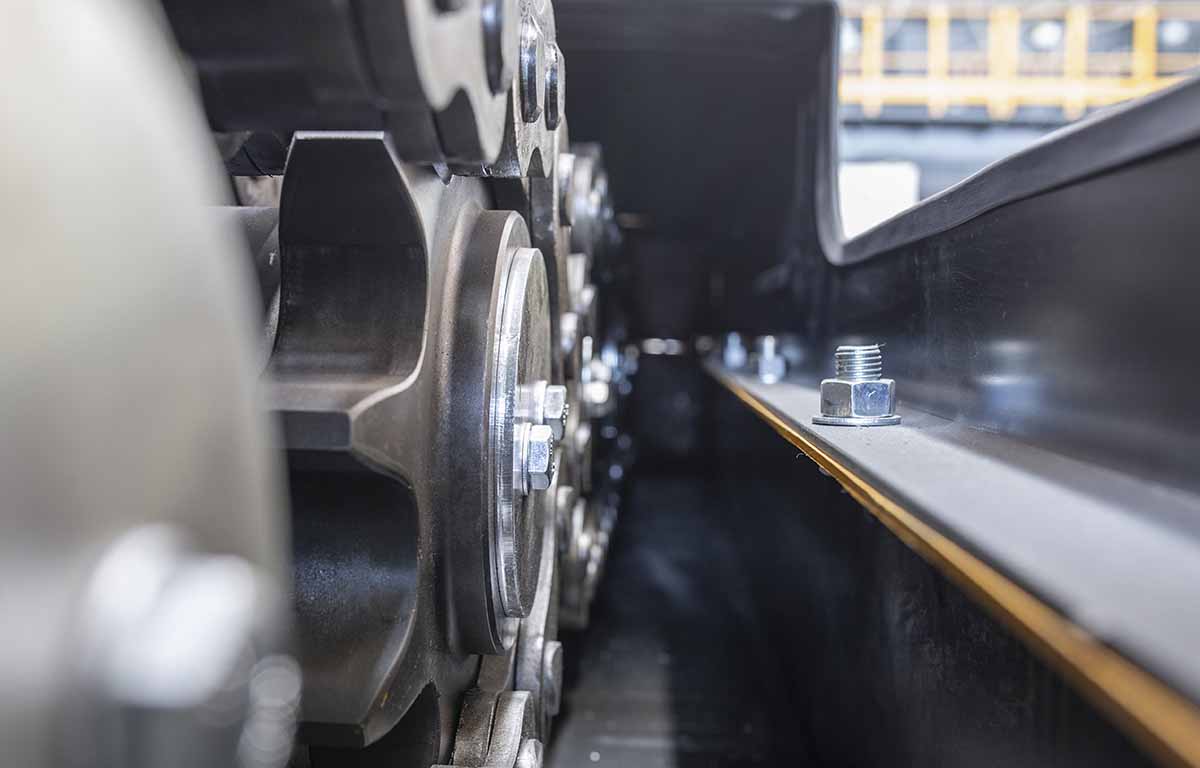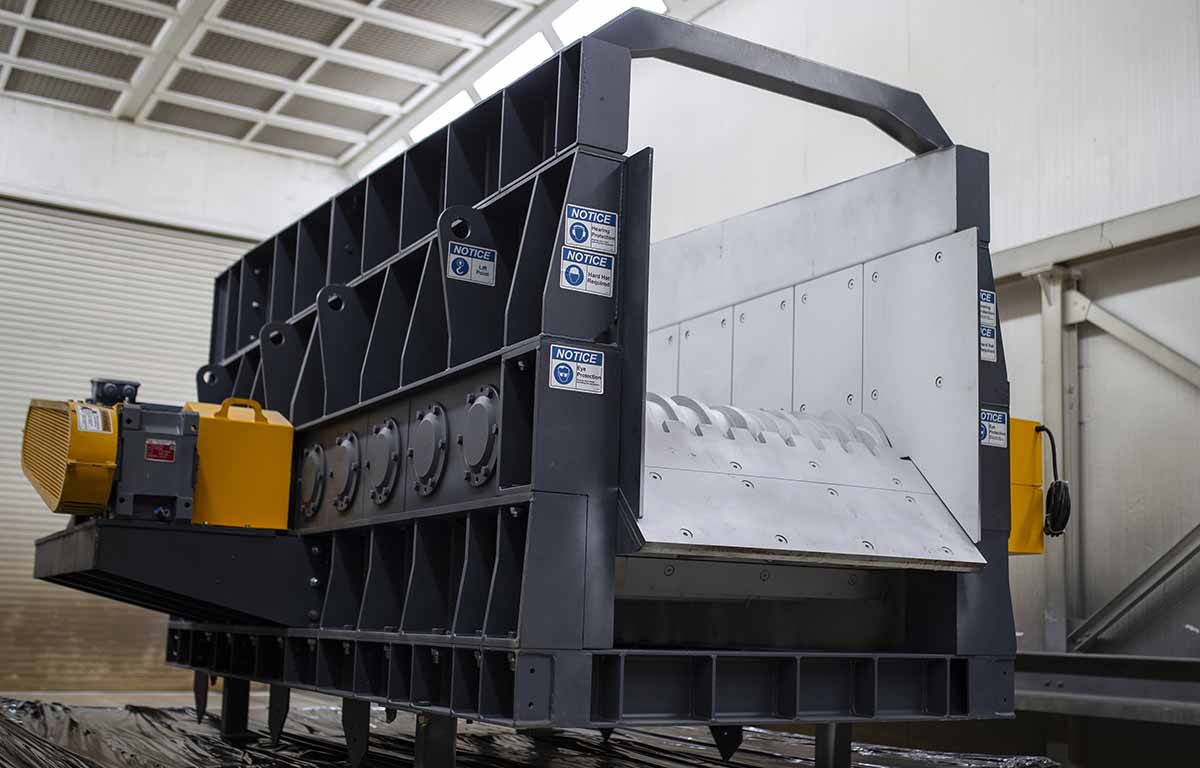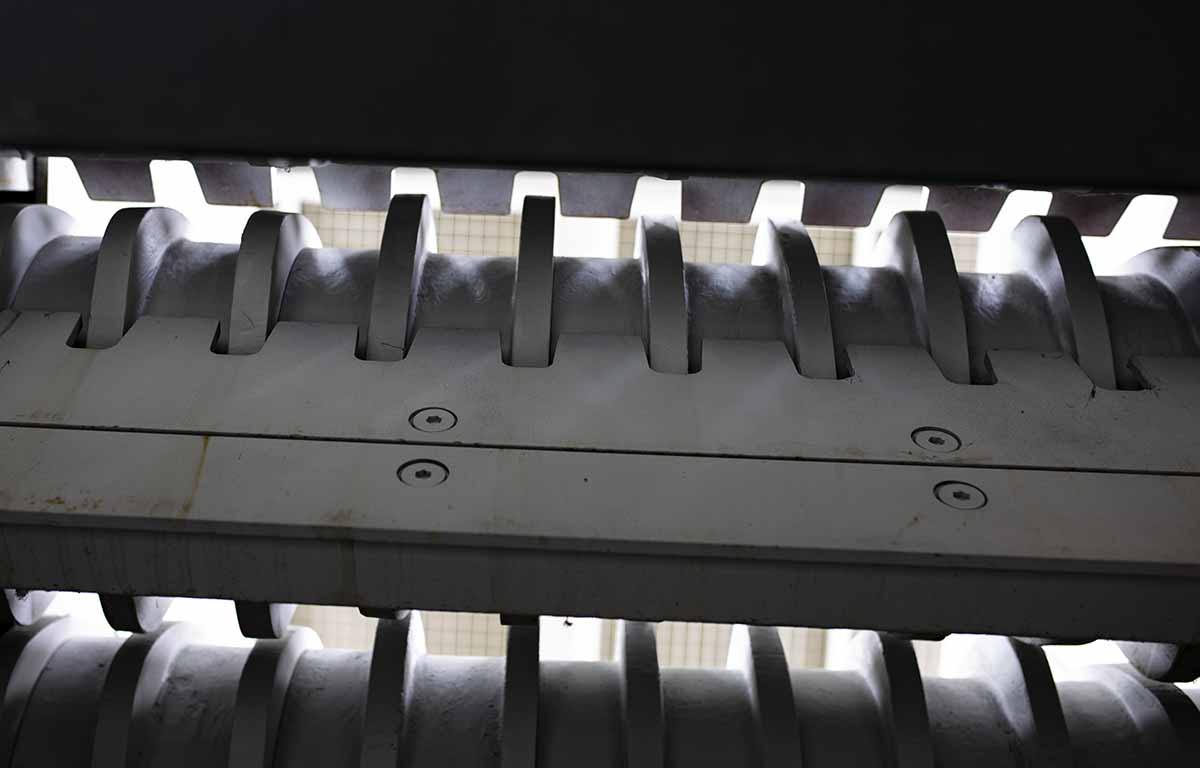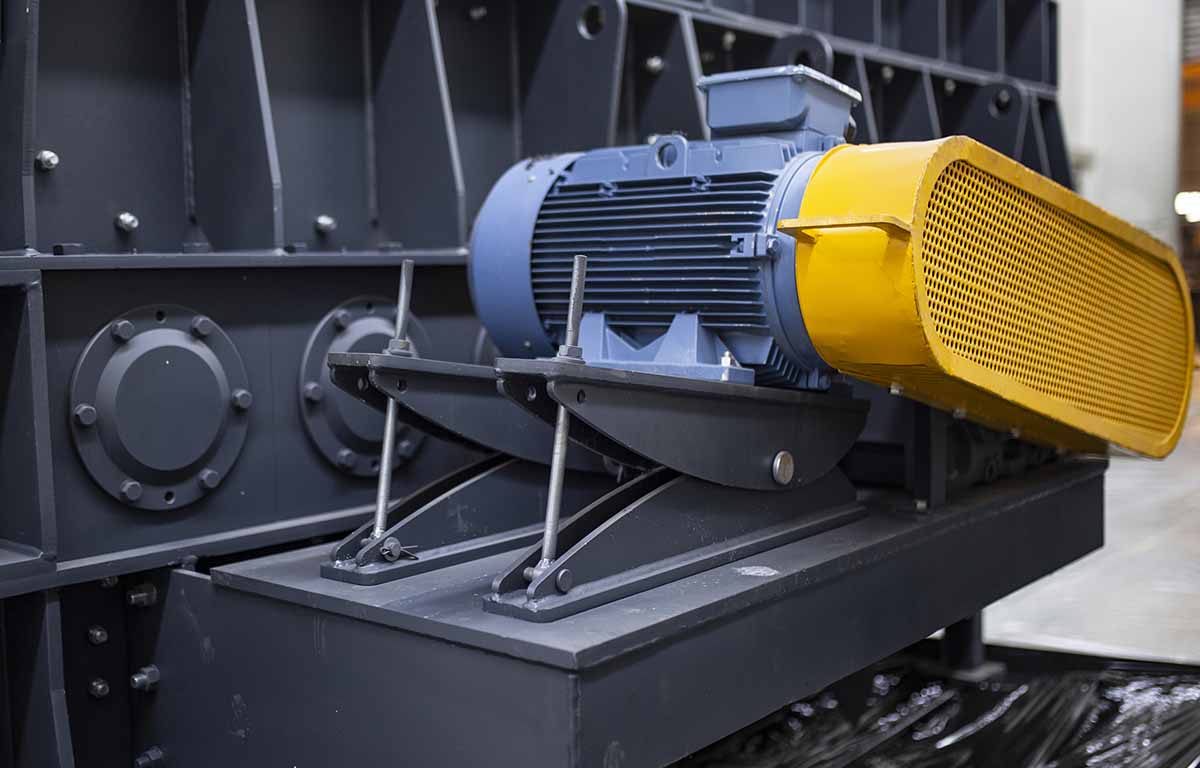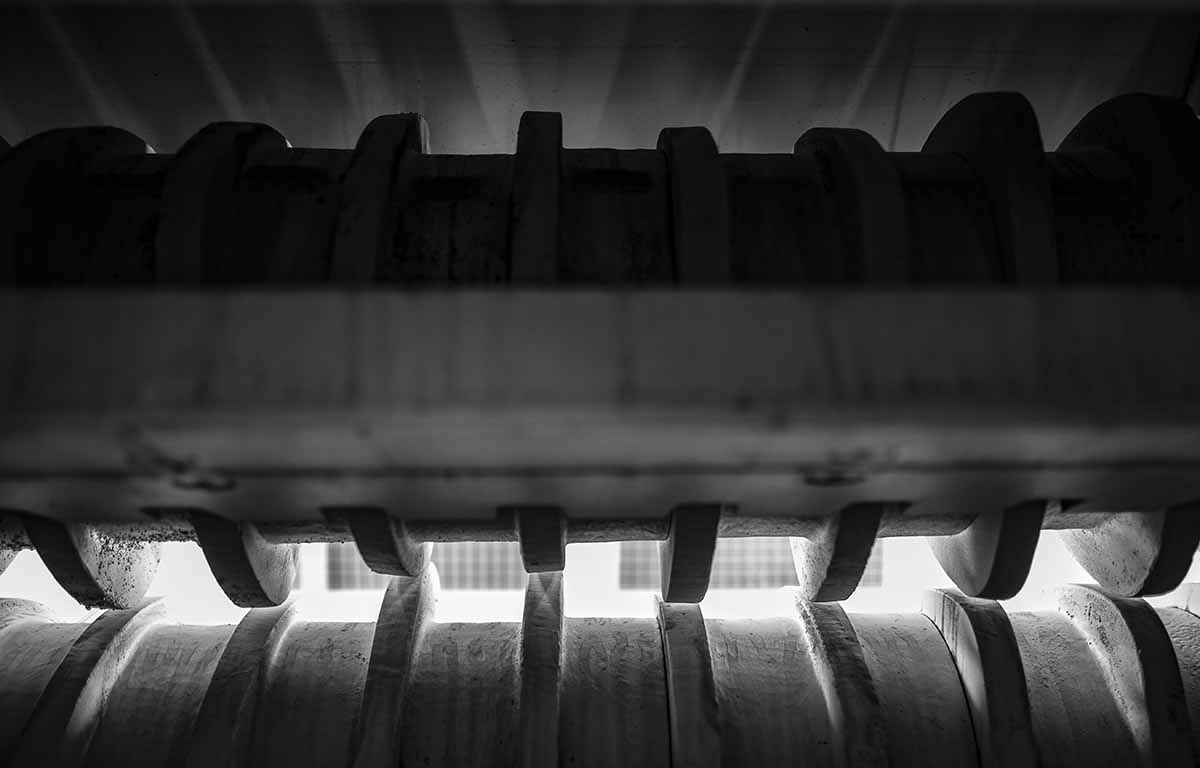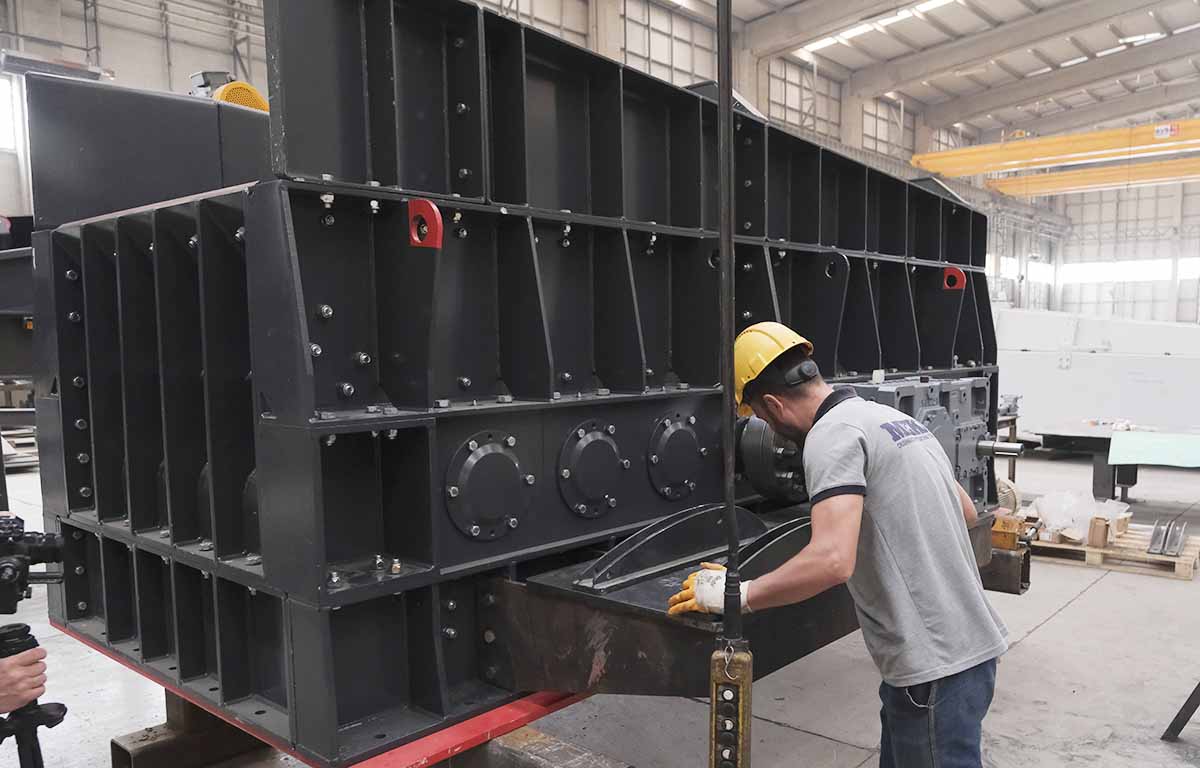Wobbler Feeder Gallery
More efficient facilities in all weather conditions and difficult materials
Also known as disc feeders, MEKA Wobbler Feeders are a type of primary feeder specifically developed to handle wet and sticky materials without problems, while separating smaller-sized materials. Composed of side-by-side rotating discs, these feeders classify aggregates by separating materials into different sizes before they reach the crusher. Fine materials passing underneath the feeder can be directed to bypass conveyors.
MEKA Wobbler Feeders are designed for demanding material handling operations in mining, ore, coal, and aggregate production. With a heavy-duty chassis, drive unit, and disc system, they provide a solution that goes beyond your expectations, ensuring extremely long service life.
Applications
In open-pit and underground Compact and versatile design
Optimized through computer simulations by the MEKA R&D team, the horizontal material flow with self-cleaning triangular disc structure and compact design allows efficient operation in a wide range of applications both above and underground, for above- and below-ground material handling, MEKA Wobbler Feeders are placed after an apron feeder to ensure clean material reaches the crusher when dealing with sticky, wet, and highly clayey material.
Material movement across the feeder is ensured by triangular discs, while finer materials passing through the discs are separated and stockpiled without being fed into the crusher.
Do you want to achieve efficient feeding while reducing the load on your crusher?
Wobbler Feeder Technical Specifications
MWF 1035 |
MWF 1235 |
MWF 1440 |
MWF 1640 |
MWF 1660 |
MWF 1860 |
|
| Available Settings (mm) | 40, 60, 80, 100, 150 | 40, 60, 80, 100, 150 | 40, 60, 80, 100, 150 | 40, 60, 80, 100, 150 | 40, 60, 80, 100, 150 | 40, 60, 80, 100, 150 |
| *Capacity (mtph) | 200-300 | 300-400 | 350-450 | 400-600 | 400-650 | 650-1000 |
| Power (kW) | 22 | 22 | 30 | 37 | 2X37 | 2X37 |
*At specified inclination and for material weighing 1.6 t/m³ or 100 lbs/ft³. Capacity values are indicative only and depend not only on feeder size but also on feeder inclination, feed gradation, etc.
Would you like to request a quote or receive information about a wobbler feeder?
Would you like to receive a price quote for a MEKA wobbler feeder?
Do you need a wobbler feeder with different options and configurations?
Do you want to become a MEKA wobbler feeder dealer?
Let's move on to the next level. Contact us now by filling out the form.
What is Wobbler Feeder?
Wobbler feeders, contain a number of bars mounted side by side at an appropriate distance and rotate to carry any materials placed on them. The bar cross-section is in the form of a triangle.
It is possible to separate fine materials of various sizes before reaching the crusher, and to separate aggregate of two or even three sizes. Fine materials of different sizes passing underneath the feeder can then be directed to separate belts.

